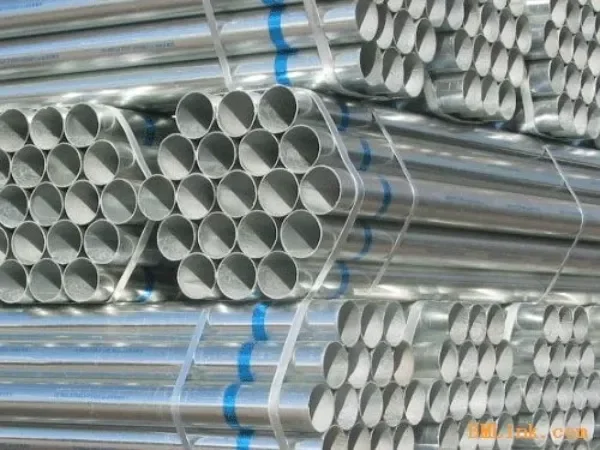How is hot-dip galvanized steel pipe produced?
Hot-dip galvanized steel pipe is a common steel pipe, which has the advantages of corrosion resistance, wear resistance, and high-temperature resistance, and is widely used in construction, machinery, the chemical industry, electric power, and other fields. The following will focus on the production process of hot-dip galvanized steel pipe in detail.

1. Raw material preparation
The main raw materials of hot-dip galvanized steel pipe are steel pipe and zinc. The material of the steel pipe is generally carbon steel, alloy steel, etc., and its parameters such as diameter and wall thickness are determined according to different usage requirements. The form of zinc is generally zinc block or zinc powder, and its purity requirement is relatively high, generally above 99.995%.
2. Steel pipe surface treatment
Steel pipe surface treatment is a key step in the production process of hot-dip galvanized steel pipe. Its purpose is to remove impurities such as oil stains and rust on the surface of the steel pipe, so as to facilitate the subsequent galvanizing treatment. Common surface treatment methods include pickling, sandblasting, and mechanical polishing. Among them, pickling is the most commonly used method. Its principle is to use an acidic solution to corrode the surface of the steel pipe to remove impurities such as oxides and rust on the surface so that the surface becomes smooth and clean.
3. Preheating
Before the hot-dip galvanizing treatment, the steel pipe needs to be preheated. Its purpose is to make the surface temperature of the steel pipe reach a certain level, so as to facilitate the subsequent galvanizing treatment. The preheating temperature is generally around 450°C, and the time is about 10-15 minutes.
Four, galvanized treatment
Galvanizing treatment is the core step in the production process of hot-dip galvanized steel pipe. The principle is to immerse the preheated steel pipe in the molten zinc liquid so that the zinc liquid forms a zinc layer on the surface of the steel pipe. The thickness of the zinc layer is generally between 5-25 μm, which can be adjusted according to different application requirements. Galvanizing treatment is divided into two methods: hot-dip galvanizing and electro-galvanizing, among which hot-dip galvanizing is the most commonly used method. The advantages of hot-dip galvanizing are uniform coating thickness and good corrosion resistance, but the cost is high; the advantages of electro-galvanizing are low cost and adjustable coating thickness, but the corrosion resistance is slightly worse.
5. Cooling treatment
After galvanizing, the steel pipe needs to be cooled. Its purpose is to quickly solidify the zinc layer on the surface of the steel pipe to prevent the zinc layer from flowing or falling off. Cooling treatment generally adopts two methods of natural cooling or water cooling, in which the natural cooling speed is slow, but the cost is low; the water cooling speed is fast, but the cost is high.
6. Inspection quality
During the production process, quality inspection of hot-dip galvanized steel pipes is required. Common inspection items include appearance quality, dimensional accuracy, thickness of galvanized layer, corrosion resistance, etc. The steel pipes that pass the inspection can be packaged, transported and other follow-up work.
In short, the production process of hot-dip galvanized steel pipe includes the steps of raw material preparation, steel pipe surface treatment, preheating treatment, galvanizing treatment, cooling treatment, and quality inspection. Every step needs to be strictly controlled to ensure the production of high-quality hot-dip galvanized steel pipes.
The Benefits of Using Galvanized Steel Pipes
How to Determine the Quality of Galvanized Steel Pipes?
Attention should be paid to the problems of galvanized steel pipe welding
How to Judge the Quality of Galvanized Steel Pipe?
Storage and Handling of Galvanized Steel Pipes
What is the thickness of the zinc layer of galvanized steel pipe?






